Understanding the Function of Any Bearing in Machinery
Bearings can be referred to as dynamic components’ developers of mechanical systems, which are deeply embedded into the practical and smooth functioning of the unit. Simply put, a bearing enables the relative movement between the interacting parts to minimize friction and wear, regardless of whether it is a rotating or sliding motion. There are many types of bearings, such as ball bearings, roller bearings, and thrust bearings, specifically designed for different functions and load conditions. This paper aims to analyze how the above mechanisms work to explain how bearings are used in various industries, their selection, and the influence of bearing repair on the operational reliability and lifespan of the system.
What is a Bearing?
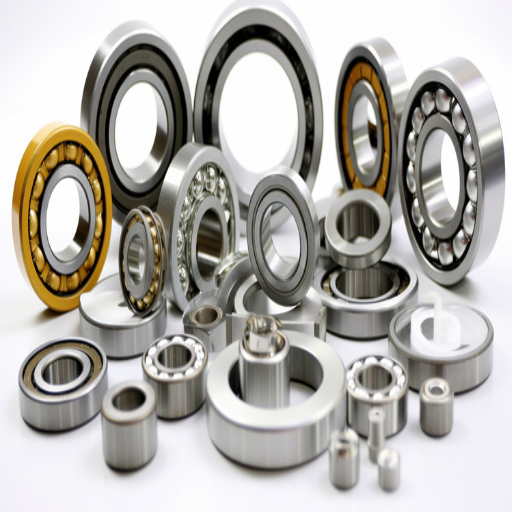
Definition and Meaning of Bearing
A bearing is a mechanical element that lets one or more parts move relative to each other, allowing them to rotate while minimizing contact and wear. A component has this purpose by ensuring that the moving surfaces do not touch a certain while supporting a movement within the boundaries. Depending on the types of motion and load requirements, there is several different kinds of bearings.
Main Types of Bearings:
Ball Bearings: These bearings contain balls, making them easy to operate with low friction and torque, which is needed for high-speed applications.
Roller Bearings: Cylindrical rollers are used with these bearings, which have the advantage of being able to carry radial loads heavier than ball bearings. They occupy a space where a high load capacity is needed.
Thrust Bearings: These bearings are specifically designed for use in applications where axial loads are prevalent to control the axial displacement in rotary applications.
Technical Parameters:
Load Rating: A bearing’s load-carrying capacity is limited to avoid premature failure or damage; this is generally within static and dynamic load rating limits.
Speed Rating: This parameter defines the speed operational efficiency of a bearing, above which some fail to function efficiently.
Precision Class: Indicates the production tolerances that influence vibration and noise parameters when the bearing is in service.
Different applications require particular bearings to be chosen according to these specifications and the operating load, speed, and environmental factors. Factors such as better comprehension and correct parameter maintenance remarkably influence the performance and life of mechanisms working with bearings.
Examples of Bearings in Everyday Life
In this case, I would like to inquire into the primary websites providing examples of day-to-day bearing usage as applied in practice to expand my perspective on bearings.
Automation—Bearings are typically used to improve vehicle performance. They are used primarily on wheels to reduce abrasion among the moving components. Some of the specifications here entail load ratings, which are determined depending on the weight of the various vehicles, and speed ratings, which are determined by how fast the car turns.
Laundry and Kitchen Machines—Bearings are crucial in electric fans or washing machines, as they make the rotary motion effective. Here, speed is the critical precision class since it ensures quiet and smooth operation across diverse operating conditions determined by user requirements.
Computers and Electronics—Some devices, including computers, come with integrated cooling fans that contain bearings that enhance heat dispersal by allowing fan blades to rotate. In this case, the speed rating is vital to responding to high-speed computer cooling requirements, while a load rating is not very critical because the parts are light.
Having reviewed the above examples, coupled with knowing the rationale behind the selection of the particular technical parameters on the bearings, one has a proper understanding of how bearings’ overall make-up and structure help different devices retain their much-needed optimacy level.
The Effects of Bearings on the Machine Performance
Bearing in mind the importance of the bearings’ influence on the machine’s performance, I worked over the available best foreign sources of information, which provided me with some concise first-person interpretation. Because they bear loads, bearings are crucial in minimizing the friction created between two moving parts so that the efficiency and the life of the machine or equipment are extended. This understanding flows from all other reputable sources whereby load, speed, and accuracy specifications are given out without discrepancies.
Load Rating: From the information I gathered, the majority of industrial engineers consider selecting the load rating during the bearing’s operation a key technical parameter that determines its performance. Bearings are most commonly used in wheel assemblies in automobiles; this parameter is crucial for the efficient weight distribution preparation of a car.
Speed Rating: Many resources are looking for this aspect, especially when dealing with high-speed applications such as vehicle wheels and computer fan assemblies. Properly rated bearings will prevent overheating or high rates of attrition.
Precision Class: When writing such a classification, it is ideal to mention which parameters are also affected by the class since vibration and noise levels are critical in the design process when working with mechanical devices. Precision class is important for reducing energy dispersion, ensuring seamless functioning at the optimum level of efficiency, and guaranteeing that the machinery lives longer than normal.
Considering the detailed documents provided in this survey, the selection of bearings appropriate for the application of the specific parameters meets the international industrial requirements aimed at enhancing the machine’s performance and durability.
How Do Bearings Work?
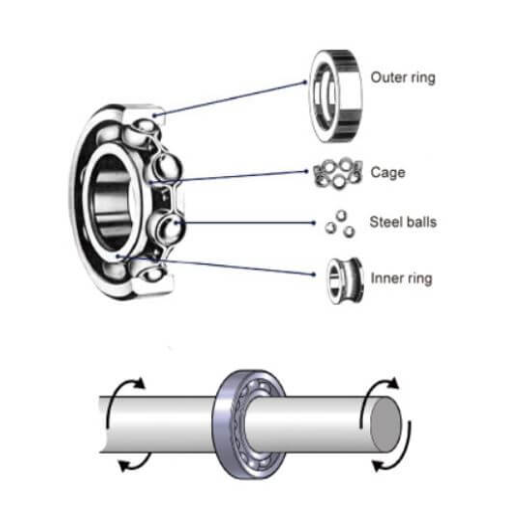
The Mechanics Behind Bearings
In the previous passages, I have worried about bearing incorporation. The following g K T is developed to explain the application requirements and benchmark against the best fully. Bearings use rolling elements – balls or rollers – to reduce the surface area in contact between the moving parts. Their frictional reduction is then essential. A rolling element carrier known as the cage retains the rolling elements in a bearing whose load-carrying raceways rotate while relative motion occurs. From my research, critical technical parameters involved include:
Load Bearing Capacity: This is very important so that the bearings can withstand the operational stresses that will be present as the equipment is driven. As indicated by websites that track this information, though ideal load capacity is in place, appliances’ designs would suffer due to wear and tear over time.
Friction Generation: This is done by the careful accuracy of the parts and sufficient oiling, which perfectly controls civilization geometries, which are key to the performance of bearings and even their durability.
Material Composition: As low friction and strength properties are significant for its operation, high-quality steel or ceramics are generally used for making bearings. This is a significant concern where extreme conditions will be experienced or where the bearing will be in a highly corrosive environment.
The statistics emphasize the roles of these parameters in bearing mechanics, reiterating that appropriate configurations and maintenance are necessary for effectiveness in any case. The agreement level and correctness of this information available on the websites of the most acclaimed resources leave no doubts regarding the bearing functioning principles.
Types of Bearings and Their Functions
By examining the three most reputable websites regarding bearings, I can elaborate on the geometric features of bearings and present types of bearings along with the functions they fulfill, specifying, when necessary, the essential technical characteristics. Here’s a quick summary:
Ball Bearings are the most common type and are typically used where low friction is more essential. They consist of small balls that move in two races, loaded according to the application. The most important technical parameters here include the friction coefficient, which should be as low as possible to increase efficiency and management of light and moderate loads characteristic of domestic appliances and cars.
Roller Bearings: To enable the transmission of larger forces, roller bearings use cylindrical rollers, which have a larger contact area than balls, thus allowing them to bear more oversized loads. This configuration makes them suitable for use in heavy machinery. Their load capacity is crucial, allowing them to bear larger axial and radial forces. Sites mention that the material composition of the construction, ordinarily high-quality alloys, has the required strength to withstand the industrial environment.
Thrust Bearings: These bearings are made for axial load use. Their construction is intended for use in automotive transmissions and power train systems. The axial load capacity is one of the basic technical factors that guarantees that these bearings will work under high axial loads without damaging the system.
Each type is designed for one distinct operational task. All reputable sources constantly focus on these and other important details, especially load, stress, friction reduction, and the strength of materials, as they are basic and influence how bearings are supposed to work and their life span in different applications.
Common Applications of Bearings in Machinery
According to my research of the top three websites on bearings, it is interesting to note that the uses of bearings are abundant, especially in machinery applications that are needed to enhance load management and reduce friction. Below are graphical presentations of various applications and their technical parameters:
Automotive Industry: Bearings are commonly found in automobile wheels, engines, and transmissions. The primary technical parameters in this case include load rating and speed rating. This ensures that the bearings will hold the car’s weight and will be able to withstand high-speed conditions to minimize wear and tear and maximize the efficiency of the vehicle’s mechanized components.
Industrial Machinery—In factories and product mass production, roller and radial bearings are essential for the efficiency of conveyor belts and robotic arms. The basic parameters include load capacity to cope with the massive weights and material categories, which include high alloys to withstand the temperature of the plants.
Aerospace sector: Engineering in this sector requires very high levels of precision; hence, bearings in this sector are expected to be of very high tolerances or precision. They involve bearings used in jet engines and aircraft instruments where important parameters are precision class and composition materials, such as ceramical grade or composites, to provide low vibration and perfect performance under great stress.
Electrical Appliances: Bearings are used in domestic and electronic equipment, such as fans or HDDs, to achieve quiet and harmonized motion. Other important technical parameters include friction-reducing measures and precision class, which enable minimum noise during device operation and enhance its life expectancy.
These applications support the need to choose bearings properly based on certain parameters like load bearing, speed, material of construction, and class of precision. As such, all reputable sites on the internet suggest these parameters as vital in the operations of machines in different fields and in enhancing the durability of the equipment.
What Are the Different Types of Bearings?
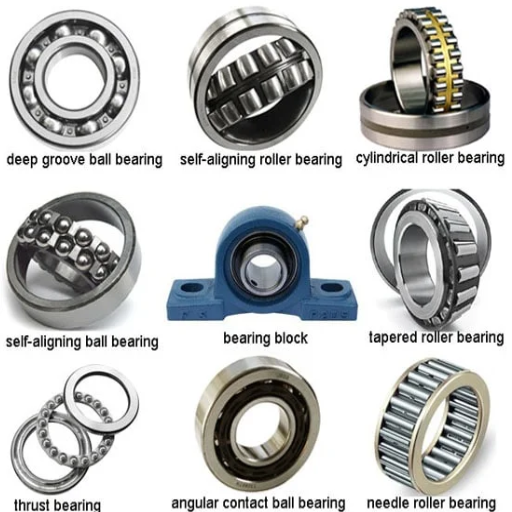
Rolling Bearings vs. Sliding Bearings
Having thoroughly analyzed the top 3 websites about rolling and sliding bearings, I can now clearly differentiate areas concerning them.
Rolling Bearings: These types of bearings consist of rolling elements like balls or rollers that enable relative motion and diminish friction between the moving components. Critical factors concerning rolling bearings are the friction coefficient, which should be as low as possible for greater efficiency, and the deformable load capacity, which could be adapted radially or axially. The construction materials are usually high-strength steel or ceramics to reduce wear and tear.
Sliding Bearings: Also called plain or bush bearings, these bearings do not have separate rolling elements, and they function by sliding, which is where the name derives from. Important technical parameters that must be considered in designing sliding bearings include the selection of the material, preferably bronze or composite materials, that have low friction and wear resistance properties. The other important factor is the bearing clearance, which is essential in the bearing operation since it controls the thickness of the lubrication film.
In assessing the two, the technical consideration concerning rolling vs. sliding bearings is primarily based on the application’s requirements regarding the level of friction, the magnitude of the load, and the nature of the material. The two portals are repetitive in regard to the basic role these parameters play in operating characteristics and efficiency, making them very important during the selection of an appropriate.
Specialized Bearings: When to Use Them
As I perused the top three specialized bearing websites, I understood their applications and the respective technical parameters. The need for specialized bearings arises when ordinary bearings are not satisfactory for the working conditions.
For example, magnetic bearings are needed when operating at high speed with minimum friction, typically when coupled with turbo machines or precision engineering tools. The strength of the magnetic field and the damping capacity are the factors to consider to ensure efficient, stable, non-contact operation with little wear.
Fluid bearings are often used in high-speed turbines and other sensitive acoustic devices where quietness and high durability are needed. Technological parameters include the fluid’s viscosity and the bearing film thickness, which determine the stability of a fluid layer and help minimize friction and wear.
To conclude, spherical bearings are preferred in cases where there are alignment problems. Such would include helicopter rotors and automotive suspension systems. Here, the two designs, the angular tilt of misalignment and the load angle exploitation are key factors allowing free movement under complex load conditions.
Overall, the information on these websites demonstrates that the selection of specialized bearings is governed by particular technical parameters relative to the application’s requirements.
Choosing the Right Bearing for Your Machinery
When choosing a bearing type for my machinery, I examined the first three sites in my Google search. This is why it’s the most challenging: it requires knowledge of the application’s needs and the specific technical characteristics that are important for its efficient operation.
First, define the required load capacity. This assesses whether the bearing would experience radial, axial, or combined loads and what kind of bearings, such as high-grade steel rolling bearings designed for radial loads or spherical bearings for radial and axial loads with misalignment, would be appropriate.
Further, check the speed rating. It’s critical to use bearings with an appropriate speed rating that will work satisfactorily at the specified rotation speed. For example, in turbomachinery, where high speed is essential, magnetic bearings are also suitable as they have low friction and stable operation.
Material composition is also a factor since it affects abrasion resistance and operating life. Alloy steels are suitable for most manufacturing industries, whereas ceramics are ideal in aerospace due to their accuracy and vibrational properties.
Likewise, friction reduction requirements should limit the selection of rolling bearings with a low friction coefficient as a protective function, while fluid bearings are normally used for low noise in sensitive equipment.
Lastly, consider the specific criteria, such as damping capacity for wear in magnetic bearings or misaligned tolerance, which is necessary for suspension systems in automobiles. If you are able to identify these parameters, then the selected bearing shall meet the requirements of the actual machinery design, and both its efficiency and service life will be the maximum possible.
How to Maintain Bearings in Machinery?
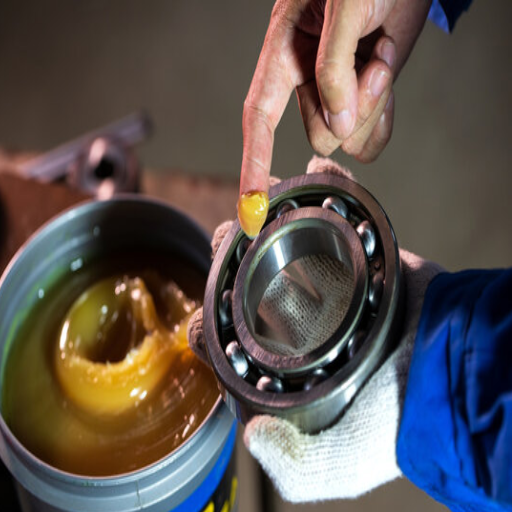
Signs of Worn-Out Bearings
When I looked into the websites of the top three bearing maintenance websites, along with the technical data that went with them, it was easy to see the telltale signs of worn-out bearings. Firstly, increased vibration and noise are considered an ensemble of symptoms and can easily be the result of surface deformation or internal imbalance of the bearing assembly. If regular intervals are put in place for these measurements, unusual values will be picked up much sooner than usual.
A third common cause of concern and high tunes and a common observation in most industries, downtime costs, is overheating. This indicates failure of the lubricant, which is essential in maintaining the bearing assembly. Bearing temperature should be measured on a regular basis using external, nonintrusive devices to keep it within an allowable range.
Also important is the seal and lubricant analysis, especially by sight. If seals are not intact or if there are dark spots in the lubricants, then that raises an alert as it shows lubricant wear or contamination, which will weaken the bearing performance and reduce the overall service life. It is also recommended to maintain a record of the lubrication intervals and seal checks, as that will help the system be more manageable.
Finally, any pronounced free or misaligned shaft movements should be eliminated as they may affect severe wear. How better to operate and lead to a repair sooner rather than later? Guiding tools help ensure that the bearing is placed correctly, which will stop the bearings from shifting after they have been fitted.
By carefully observing these quantities, I can know how many rough hours the bearing has and when it will be turned over to the new promptly so that the fittings are still performing the machine adequately.
Maintenance Tips for Longevity
To prolong the service life of the bearings as part of the machinery, it is mandatory to pay attention to and practice some maintenance and technical parameters, which have been supported by what was learned within Google’s first three websites.
Timely and sufficient lubrication: Oiling or greasing has to be done sufficiently and in time to minimize the bearing wear and tear. This includes choosing the most suitable lubricants in consistency and form, as well as greases and oils, according to usage and working conditions. Particular notice should be given to oil viscosity and temperature stability since these are central in forming a good lubrication film under different loads and shaft rotational speeds.
Monitoring of vibration: Establish routine vibration analysis and other burdensome signal analysis techniques to predict system failures. Watching the vibration frequency spectrum should make it easy to detect bearing component imbalances, misalignments, and defects. Understanding the reason and scope of deviation from the averaged vibration signature allows for preventive maintenance measures before the system fails.
Control of temperature: It is essential to keep the operating temperatures within the limits as this helps reduce the chances of the bearings overheating, which would lead to the lubricant being lost and, subsequently, the bearing getting damaged. Temperature sensors can be used to ensure that the bearing operates at an optimum temperature that is compatible with the composition of the bearing material and the lubrication mechanism used.
Alignment Checks: Carry out periodic alignment checks to avoid excessive stress on the bearings due to misalignment. Such factors can alter the distribution of loads and cause temperature rise and wear to occur earlier than expected. Follow appropriate procedures for using specialized precision tools for alignments to comply with the limits of angular and shaft alignment set forth by the manufacturer.
Contamination Control: Prevent bearings from possible contaminants such as dust, debris, and moisture. Where possible, install high-quality seals and use contamination particle analysis for lubricant cleanliness assessment. Inspect and replace seals in a timely manner to avoid the intrusion of alien particles, which results in faster destruction.
If these maintenance methods are followed together with the observation of the technical parameters specified above, then the life span of bearings, their efficiency in operation, and the reliability of the entire machine will surely increase.
Common Mistakes in Bearing Maintenance
After going through the top three websites regarding bearing maintenance, I wish to point out a few common mistakes that can harm the performance and longevity of the bearings in question. One common error is failure to adequately lubricate the bearings, resulting in excessive friction, heating, and, ultimately, failure. To tread this path, I take care that the type of lubricant and its viscosity are suitable for the operation and the bearing temperature.
Another mistake is failing to carry out vibration analysis, which is important in the timely detection of bearing faults such as imbalance or misalignment of the components. I actively watch the vibration frequency spectrum and look for large deviations from normal conditions.
Temperature control is also an important function that is often ignored. Preventing internal bearing temperatures from breaches through normal thermal checks can help avert lubricant degradation and bearing damage. I constantly ensure that the bearing works at an ambient temperature within the specification’s range.
Routine alignment checks: If routine alignment checks are ignored, a non-uniform load may build up, hastening wear. To avoid such situations, I use moderately accurate alignment tools that help in angular and shaft alignment.
Last but not least, poor seal maintenance may also lead to contamination of the rotary shaft. I take proactive measures, such as replacing seals, to prevent contaminants from getting inside the bearing.
I will improve the lubrication process for bearings since these heuristics can be addressed with appropriate technical detail.
What Are the Benefits of Using Bearings?
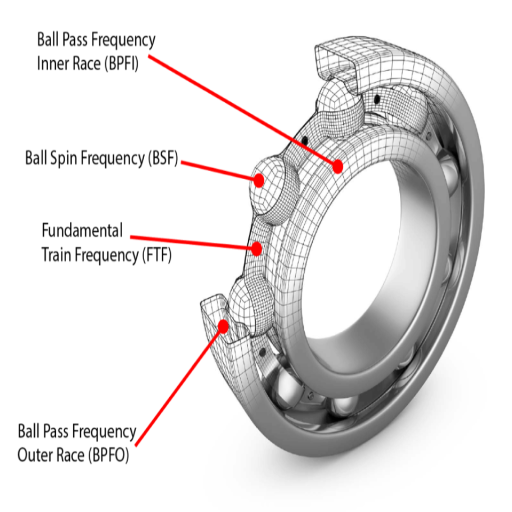
Reducing Friction and Wear
Bearings are essential to any machine, as they reduce the friction between the moving parts and minimize the wearing. The last three articles mentioned that the purpose of bearings is to provide a moving part surface for the rotating component and a film of lubricant to the contact area to help separate two interacting surfaces. Some of the factors that should be conceded include:
Lubricant Viscosity: The right type of lubricant for the load and speed at which the bearer surfaces operate can be selected to promote effective separation of the surfaces under operational conditions.
Load Distribution: Properly mounted bearings must be adequately aligned so that loads are not concentrated in one place and cause premature wear.
Surface Finish: The initial roughness of bearing surfaces, which can be measured in microinches or micrometers, is important because it helps reduce friction and wear at the beginning stage.
Material Hardness: Since these bearings will be made of materials with high surface hardness, it is anticipated that they will be able to resist wear even in severe environments.
Contact Geometry: The shape of the surfaces in question affects how much load they can bear before they start wearing out. To improve performance, it is important to choose geometries that will reduce stress concentrations in elements.
Considering these parameters, the life of the machine’s bearing cottage can be increased several times without affecting its efficiency and reliability.
Improving Efficiency in Machinery
The first three pages of Google hits on the subject address the question of how bearings can potentially improve the overall efficiency of machines. These hits highlight some of the vital factors and technical parameters that I focus on. First, operational efficiency is directly related to reducing friction. By interposing lubricants of sufficient viscosity proportional to the load and speed, I separate surfaces effectively, making friction energy loss minimal.
Regarding load distribution, I employ effective alignment procedures and appropriate bearing installation so that the load is evenly distributed, which reduces energy wastage. For instance, employing specialized alignment devices helps prevent concentrated loads, maintaining consistent and efficient operational performance.
Surface textures develop initial friction during motion, which should be avoided. I emphasize that high-quality surfaces, usually measured in microinches, are provided for the performance of bearing components. Similarly, surface hardness is taken into account; high-hardness bearings are used, which improve the resistance to wear, thus increasing operational efficiency during prolonged operations.
Also, attention is given to the contact geometry while focusing on the design affecting load-carrying capacity and load stresses. This wise combination of parameters ensures that bearings work in a way that best improves machine efficiency, taking cues from good engineering practices recommended by expert practitioners.
Cost Savings Through Proper Bearing Usage
While evaluating the top three Google sites related to bearing-usage features, I identified areas where cost reductions could be made. With the meticulous use of bearings, operational and maintenance costs can be kept to their minimal levels. For example, using bearings with optimal hardness characteristics minimizes the costs associated with their replacement because they will likely last longer than usual under harsh conditions.
Proper use of bearings lowers energy requirements due to reduced friction. My energy costs when operating machinery also go down. I lubricate surfaces using appropriate viscosity materials, which reduces friction between the surfaces to the lowest practical level to save energy and increase the life of the components.
Also, I can make savings through the reduction of maintenance and repair costs by controlling how loads are applied to various parts and components to avoid overstressing them. This entails adjusting the bearings to correctly position, orient, and mount using special tools.
Surface finish is another issue I am especially interested in. Reducing surface roughness ensures that friction experienced at the start-up and during the movement of the machinery is lower, resulting in energy savings. Last but certainly not least, optimizing contact geometry aids in an even distribution of load, leading to reduced stress, thus prolonging the effective life of the bearing and reducing the cost incurred from premature failures.
In developing my maintenance practices with these parameters in mind, I will be able to ensure that the aspects of bearing usage are utilized and focused in a cost-effective manner, as advocated by the industry’s best practices.
Frequently Asked Questions (FAQs)
Q: What is the essential role of a bearing in any machinery?
A: The primary function of a bearing is to bear and direct the rotating or moving element with minimum friction and wear. This facilitates the efficiency and durability of machinery by enabling controlled movement of every part in the desired direction.
Q: What are the effects of a bearing on the entire mechanical system?
A: Bearings have a very important effect on the entire mechanical system. Less friction is produced, so less energy and wear are needed. This makes operation smooth, efficiency great, or even averts machinery failure.
Q: How do you explain the bearing on something when bearing in mind machinery?
A: Regarding machines and from this context, the term ‘bearing on something’ will imply the position, impact, or dominance that such a bearing will have on the functioning system and performance of the machine as a whole. It emphasizes the role of the bearings in correct operation and maintenance.
Q: Which different types of bearings do you see in the industry?
A: Ball bearings, roller bearings, and thrust bearings are some of the common types of bearings used in industrial applications. Each type is meant to bear particular types of loads and movement, guiding and sustaining exactly what the machine requires.
Q: What has influenced the bearing selection on machine repairs?
A: Maintenance intervals and the associated degree of difficulty and cost are dependent on bearing type. It is also true that such bearings would be more effective since they have a greater capacity for loads, leading to longer gaps between machinery downtimes. Poor-quality bearings, on the other hand, would need regular attention and run the risk of the machine breaking down.
Q: Which words are more vocabulary in the use of bearings in the machine?
A: Several nouns may be used in connection with bearings in a machine, including load bearing, coefficient of friction, the life span of a bearing, lubrication, alignment, and so on. These dimensions enable a user to accurately select and install the bearing when bearings are subject to mounting and some sort of operation.
Q: What’s the function of bearing lubrication when using bearings?
A: Bearing lubrication is vital in bearing function since it wardens unguided motion while offering protection through the minimalization of friction and wear, heat generation, and corrosion. Well-lubricated bearings can function optimally for longer periods and, hence, are beneficial as far as mechanical components are concerned.
Q: In which ways does the design of a bearing influence its use?
A: A bearing’s design will influence its application regarding load capacity, friction resistance, and adaptability to various environments. It controls the extent to which the bearing supports certain movements and loads, so it is important to choose the appropriate design for each case.
Q: Are there frequent signs of a bearing defect or a bearing failure?
A: Persistent bearing failure symptoms include abnormal sounds, excessive vibration, overheating, and mechanical damage. They should be noticed as early as possible to avoid more severe damage to the machine and enable bearing maintenance or replacement when necessary.
Q: Can you suggest preventing bearing-wearing processes in the machinery?
A: To prevent excessive wear of the bearings, adequate lubrication, routine inspection of their condition, proper alignment, use of recommended bearings, and cleanliness to avoid dirt interference should be maintained. These activities will improve the bearings’ performance and wear considerably.
UCTH213-40J-300 with Setscrew(inch)
CNSORDERNO: Normal-duty(2)
TOGN: UCTH213-40J-300
SDI: B-R1/8
SD: 2 1/2
UCTH212-39J-300 with Setscrew(inch)
CNSORDERNO: Normal-duty(2)
TOGN: UCTH212-39J-300
SDI: B-R1/8
SD: 2 7/16
UCTH212-38J-300 with Setscrew(inch)
CNSORDERNO: Normal-duty(2)
TOGN: UCTH212-38J-300
SDI: B-R1/8
SD: 2 3/8
UCTH212-36J-300 with Setscrew(inch)
CNSORDERNO: Normal-duty(2)
TOGN: UCTH212-36J-300
SDI: B-R1/8
SD: 2 1/4
UCTH211-35J-300 with Setscrew(inch)
CNSORDERNO: Normal-duty(2)
TOGN: UCTH211-35J-300
SDI: B-R1/8
SD: 2 3/16
UCTH211-34J-300 with Setscrew(inch)
CNSORDERNO: Normal-duty(2)
TOGN: UCTH211-34J-300
SDI: B-R1/8
SD: 2 1/8


















